Villainous Hair
Villainous Hair
by Madeline Grimes
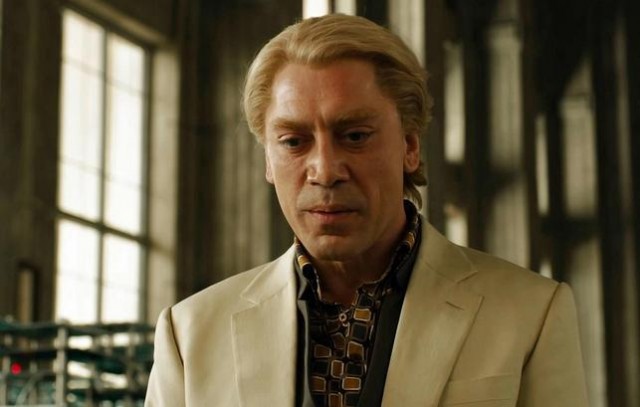
Even if you’ve only seen a trailer for Skyfall, the new and very good James Bond movie, you know Javier Bardem is the villain. Instantly. It’s his haircut: a meringue of floppy blond mullet, as if the hairstyles of Michael Bolton and Nicolas Cage had crept off, spent a night of torrid passion together, and this bleached muskrat was the result of their union. The style doesn’t suit Bardem’s face or the setting, and no self-respecting man would ever consider wearing his hair in such a fashion (nor would any Hollywood stylist allow it) — that is, unless he was evil. Pure, unadulterated, villainous evil.
It seems that possession of a terrible haircut is the Hollywood litmus test for evil. The hairstyles of movie villains are the physical embodiment of their criminal and immoral impulses. Whereas the heroes and heroines of Hollywood are blessed, in large part, with beautiful, flowing locks that indicate youth, virility and virtue, the villain is cursed with balding, wild, or dual-color dos that speak to his or her madness, isolation, and immorality. With few exceptions — most notably, Hitler’s toothbrush mustache and Mugabe’s philtrum thing, and, oh, Trump — the hair of the villains who exist outside of movies is, well, normal, at least in our modern times. Generally, in real life, evil approaches by stealth — it doesn’t announce its cruel intentions with a bad perm. But in film and TV, bad hair is what signals something wicked (and funny-looking) this way comes. And we can see this in the past 50 years of Bond films, which have shown us all the way different, hideous ways a villain might appear onscreen.
THE TYRANT WITH HIS DIPPITY-DOO GEL
The point of the villain’s haircut is to let us know at first sight, just what type of villain we’re dealing with. Take, for instance, the tyrant: A man or woman who seeks power and control over others at any price. In the Bond catalog, we saw such a character recently in Casino Royale’s Le Chiffre.
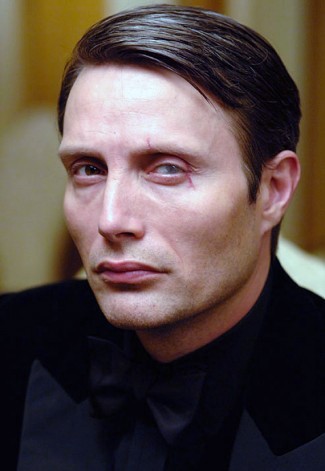
We know LeChiffre’s evil and not only because of the eye that weeps blood (although that is one indicator!). It’s also that hair: Greased and slick as a wet otter. It’s a style that attempts and fails to mask a diabolical nature. And we’ve seen it countless times.
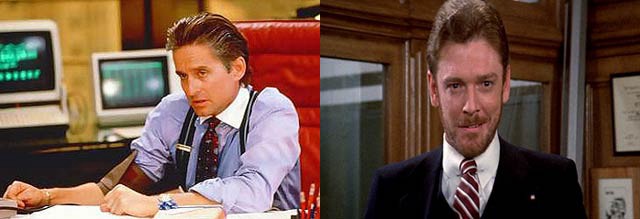
In the 80s, this look was popular on men who prized power over everything else. Michael Douglas’s Gordon Gekko, ruthlessly careened around Wall Street, hungry for more money and more power. Then there was William Atherton’s Walter Peck whose inflated sense of self-worth as an EPA Agent in Ghostbusters warranted a slap from Slimer.
The common thread between these characters, besides their delusions of grandeur and propensity for malevolence, is their hair. Wet, slick backed, neatly combed ‘dos that requires a half-gallon of hair gel and a dedication to owning the nickname “Vaselino.”
It’s a haircut that says, “I am powerful, and I exert control over every follicle on my head… and I intend to extend that control over you too.” And this is where such tyranny tips over to…
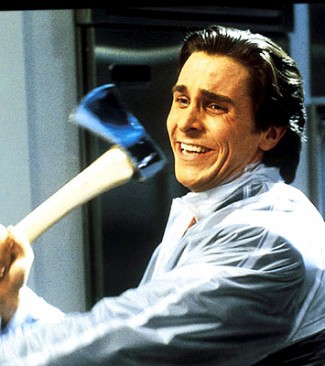
… American Psycho’s Patrick Bateman.
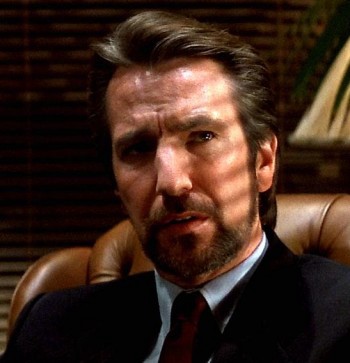
And he’s not the only psychopath with a greasy coif. There’s Hans Gruber (Alan Rickman) who has an expertly slicked back mane (and perfectly manicured beard) in Die Hard. Gruber is the type of psychopathic mastermind who will stop at nothing — not even a piling bodycount — to get what he wants. And he wants a lot of money, ostensibly so that he continue to get his hair done at Europe’s finest salons.
In Silence of the Lambs, Hannibal Lecter famously wears his hair slicked straight back on his head. But it’s when we meet Dr. Frederick Chilton, the director of the sanitarium where Lecter is jailed, that we know we are in the presence of something much worse than a cannibal — a vain & petty tyrant.
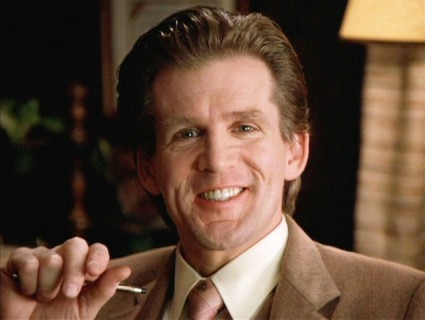
THE EERILY UNNATURAL DYE JOB
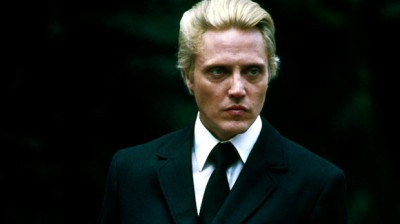
In Skyfall, Javier Bardem’s Raoul Silva wears what can only be described as a surfer’s hairdo gone terribly wrong. The bleached blond color suggests that along with the pigment of his hair, something of Silva’s humanity has also been stripped away. This isn’t the first Bond villain with hair too fair to be natural. Silva had a predecessor in Christopher Walken’s portrayal of Max Zorin in A View to a Kill. Zorin’s Ken Doll emulation makes him seem immediately suspicious.
Even child villains aren’t exempt from evil hair. In the Harry Potter series, Draco Malfoy has an unbecoming and too-blond-to-be-true ‘do.
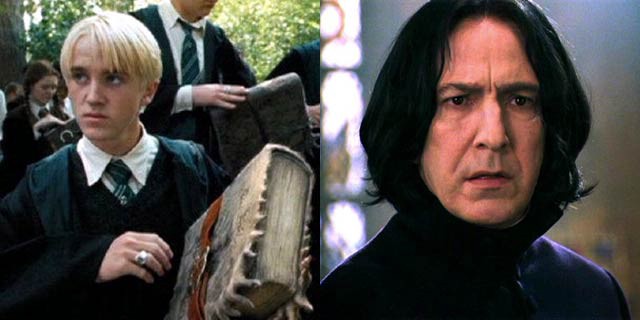
And his pal, dear old Severus Snape (Alan Rickman), commandeers the potions class with sarcasm and cruelty. His hair color isn’t blonde, but it certainly isn’t natural. It’s too dark, too black, and too unreal to belong to anyone but a villain (or so we think!).
VERY BAD, NO-GOOD, POWER-HUNGRY LADIES
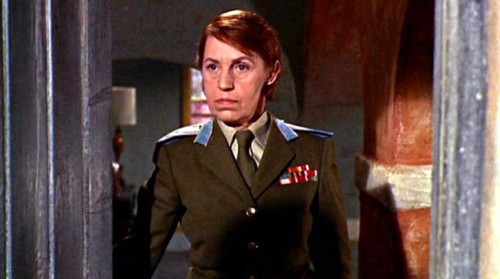
In women, tyrannical hair tends to manifest itself in the form of a “power hair.” This style indicate that a woman is willing to put in the time and money to create a look that immediately signifies her dominance and control. Power hair is usually short and meticulously styled. Although this style is occasionally seen on protagonists — and almost always on the heads of high-powered, domineering female politicians — villainesses are just as likely to wear it. Rosa Klebb from From Russia With Love wears her hair in a utilitarian no-nonsense style. Her hair is serious, and her intentions diabolical.
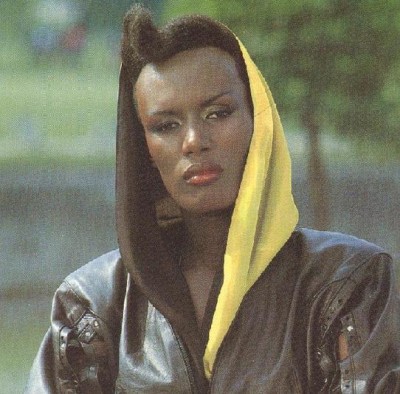
And then there’s Grace Jones as May Day in A View to a Kill. Jones sports a sharply glossed style that you know took hours to create. It’s a style of unequivocal strength and just a dash of immorality.
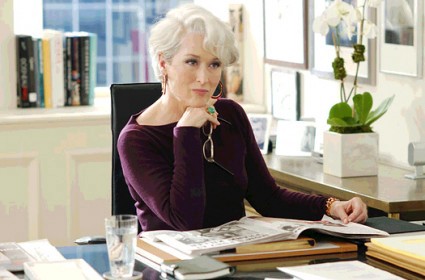
Likewise Miranda Priestly (Meryl Streep) in The Devil Wears Prada, doesn’t mind laboring over her hair. With the help of her expertly hair sprayed coif, she backstabs her employee and confidant, ladder climbs on the heads of colleagues, and conducts a reign of terror on poor, anorexia-coveting Anne Hathaway. Could she do that with the blonde flowing locks of, say, Buttercup in Princess Bride?
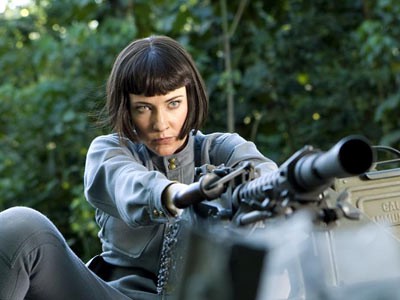
Or there’s Cate Blanchett’s Irina Spalko in Indiana Jones and the Kingdom of the Crystal Skull. Her overly angled (and completely mis-colored) bob immediately signals “danger.” Run Indy, run!
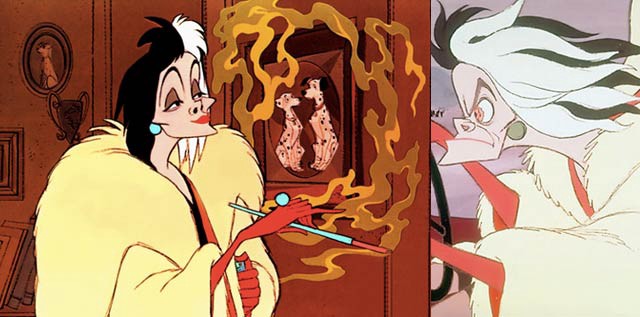
Even Disney villainesses have power hair. But when enraged, they tend to morph into crazy, wild-haired- tresses-gone-crazy wrathful lunatics. Take Cruella de Vil’s dual-colored coif in 101 Dalmatians. By day and sunny disposition, it’s an elegant, bourgeois black-and-white style that she, no doubt, spends hours maintaining. But when things aren’t going well for Cruella and her rage gets the best of her, her hair transforms, monstrously into Medusa-like twists and coils; hair that cannot be stymied by mere spray, hair that has come unhinged. Just like Cruella.
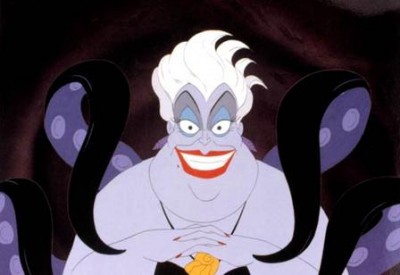
The same happens to Ursula. Scheming, manipulative, Ariel-just-give-me-your-voice Ursula has well-kept (if not necessarily stylish) hair that seems to resemble Miranda Priestly’s hairspray-stabilized bob. But the moment Ursula gets power, her hair (and her temper) goes crazy.
THE DORKY LACKEY AND THE MANIACAL MUSTACHE
Sidekicks, no matter what team they play on, tend to be doofuses. They’re plucky, hapless dimwits who follow their master’s lead no matter the consequence. They’re never as cool, or suave, or maniacal, or smart as their leader. And their hair lets you know just where they land: Far short of cool.
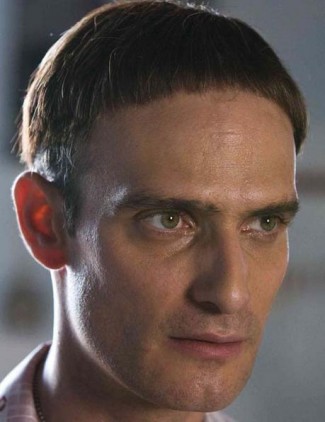
Bond villains tend to have a series of henchmen do their bidding, and like their masters, these henchmen inevitably have, in varying degrees, bad hair. In the recent Quantum of Solace, Elvis (played by Anatole Taubman) has a monastic hairstyle that signals he probably went to his prom dateless.
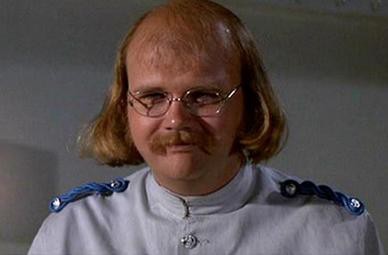
And I’m guessing Mr. Kidd (Diamonds Are Forever) with his half-balding comb-over mullet was never voted homecoming king.
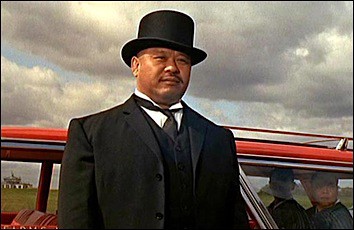
And who could forget Oddjob (Goldfinger)? In this case, it wasn’t his hair that spelled evil, but his mustache, which was as murderously precise as he was.
His was a look reminiscent of the villains depicted in early films: Cackling, mustache-twilling mad men prone to laying women across the tracks of oncoming trains. These villains were portrayed as pure evil: Caustic, belligerent foils that served to highlight the virtuous qualities of the hero. And their hair was bad, but it wasn’t horrible.
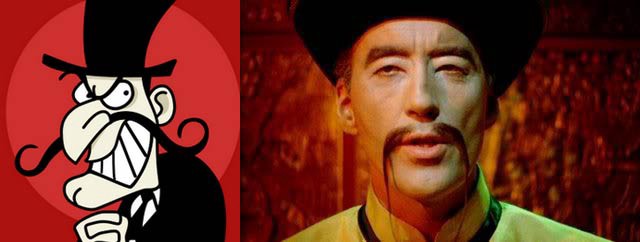
Their mustaches, on the other hand, were monstrous: Thin black lines that when twirled — and what pray tell, does that action signify if not a conjuring of evil plans? — curled into comical Shirley Temple corkscrews — this convention lived on in the character of Snidely Whiplash. Then there were the wispy black whiskers that jutted downwards, sideways, and up in angles that seem outlandish and gravitationally improbable. See the evil genius Fu Manchu.
SOMETIMES I FEEL SO CRAZY AND SO DOES MY HAIR
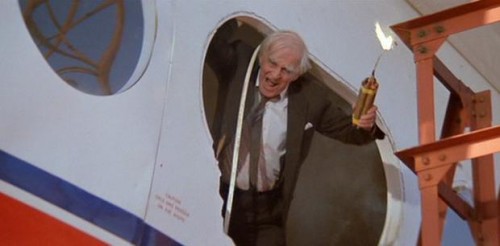
Crazy hair is another villain favorite for both men and women. In A View to Kill, Dr. Carl Mortner (aka Hans Glaub) fills the role of the mad scientist archetype. It is his lunacy that creates and fosters psychopathic super children like Max Zorin. His hair, like his mind, is in disorder. It’s white and thinning, and unkempt looking. And it isn’t just the hair on his head. It’s the bushy white caterpillars he claims for eyebrows. They’re unwieldy beasts, thoroughly untameable. As loony as the Doctor himself.
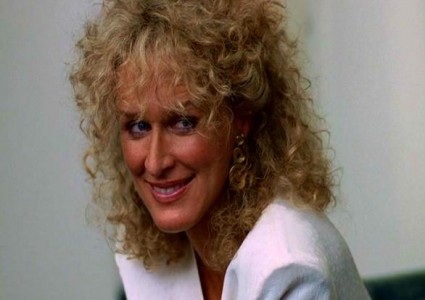
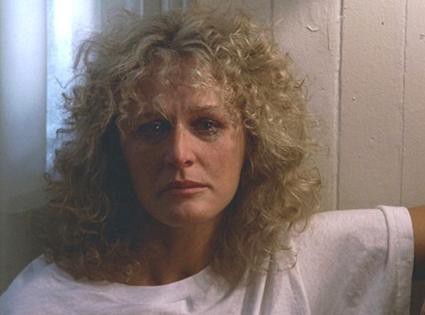
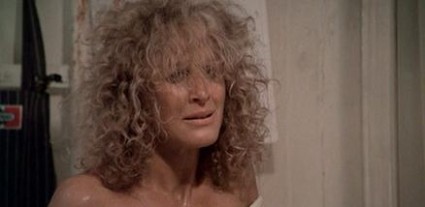
In Fatal Attraction, Alex Forrest (played by Glenn Close) wears a wild mop top of blond curls. Her hair gets progressively larger and out of order as time passes, until we know, with certainty, that she’s mad.
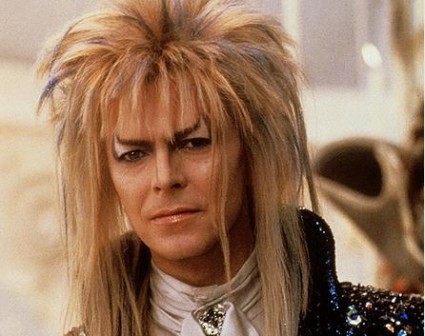
And David Bowie’s bleached spiky fright wig in Labrynth is an indicator that Jareth might not be all there. After all, he falls in love with a teenager he knows for all of three hours, his only friends are puppets, and he’s prone to singing songs about magic while wearing bright purple leggings. He is either fabulously awesome, or batshit crazy. There is no in between.
BALD, BALD, BALD, YOU’RE BALD AS AN EVIL PING-PONG BALL
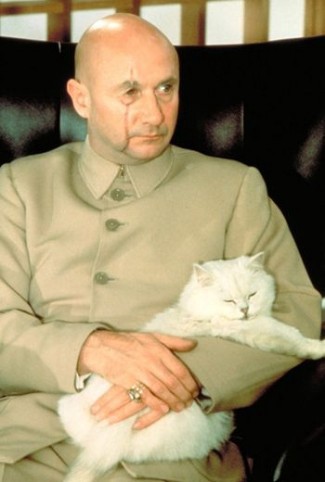
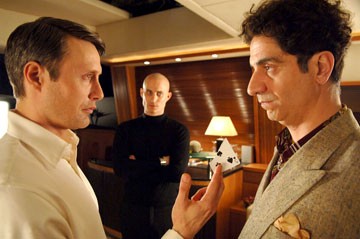
Not all villains even have hair, some suffer from the “bald of evil.” Baldness, in this sense, is equated with moral ineptitude, as if to suggest that the character’s hair, and thus their humanity, was scourged away by their immorality. There’s Kratt, Le Chiffre’s twisted and cunning henchman in Casino Royale; and then there’s Bond’s most infamous (and recurring) nemesis, Ernst Stavro Blofeld. In his most memorable characterization, (You Only Live Twice), Blofeld is bald and scarred, maniacally stroking a fluffy white Turkish Angora cat as if jealous that her hair still exists. (You might recognize this villain not from the original, but from Mike Myers portrayal of Dr. Evil in Austin Powers)
Blofeld leads the charge in the archetype of Evil Genius. But he’s not alone.
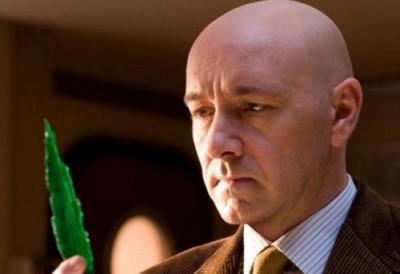
There’s Superman’s rival, Lex Luthor, who loses his hair, tragically in a chemical fire. Luthor blames Superman (then but a young Superboy) for his hair loss. And he’s pissed about it.
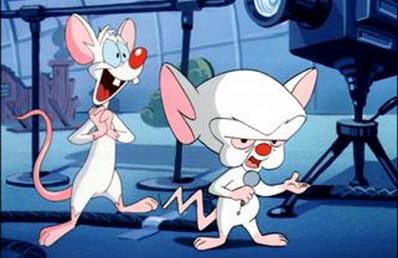
Or on TV, there’s the Brain whose maniacal plans to take over the world are foiled again and again. (Even Pinky, has a few goofy tufts of white mouse hair that show he hasn’t been corrupted by his devious master.)
And then there are the villains who aren’t necessarily geniuses; they’re just plain evil.
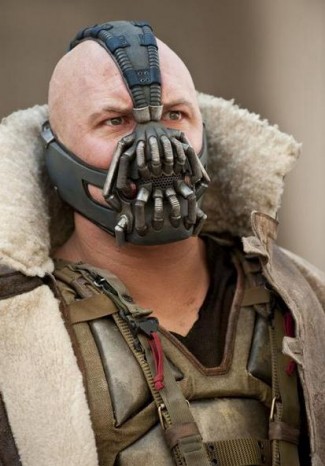
Bane in The Dark Knight Rises represents the avenging psychopath.
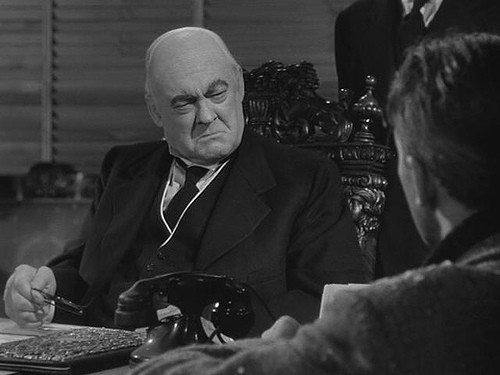
And Mr. Potter plays the heartless banker out to get the little guy in It’s a Wonderful Life.
The moral is, if they don’t have hair, don’t trust them.
HANDSOME MAN GIVEN BAD HAIRSTYLES REPEATEDLY
Skyfall wasn’t the first time, of course, Bardem has appeared on screen as a villain with bad hair. In No Country for Old Men, Bardem’s Anton sports a childlike pageboy cut. The look was based on the styles worn by British soldiers during the Medieval Crusades, and it was designed to look “strange and unsettling.”
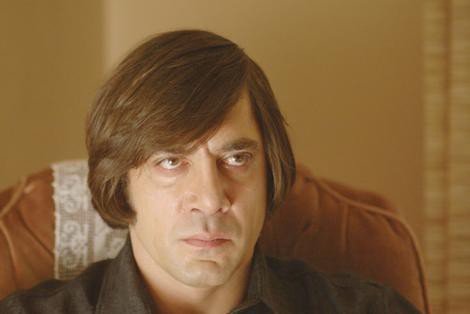
It was.
His hair hung heavily around his face, and even at his most merciless, shooting people like an eight-year old playing “Duck Hunt,” not a strand strayed from his carefully side-parted coif. Anton had obviously never opened a copy of GQ or Esquire. He was too busy flipping coins for lives and bargaining with little boys for t-shirts to bother with style. And his haircut exemplifies just this. We know, merely by glancing at him, that he’s lost touch with reality. Anton is no longer a functioning member of society; he is devoid of emotion, care, and empathy. His hair tells us so.
Bardem’s Anton will always be my favorite villain’s haircut. It’s something in the creepy way his ears are always hidden by a sheath of brown hair. The way his hair never moves, as if no mother or father ever dared to ruffle it or love it. It’s the type of haircut where if you saw it on someone in the supermarket or at a coffee shop, you would know to never make eye contact, and to back carefully and slowly away from its possessor. I’m guessing Bardem’s newest villain in Skyfall is just as terrifying. Because let’s face it, that hair is clearly up to no good.
Related: Being James Bond Also Makes You Get Really Old, Very Quickly!
Madeline Grimes is a writer based in Brooklyn. Her website can be found here.
